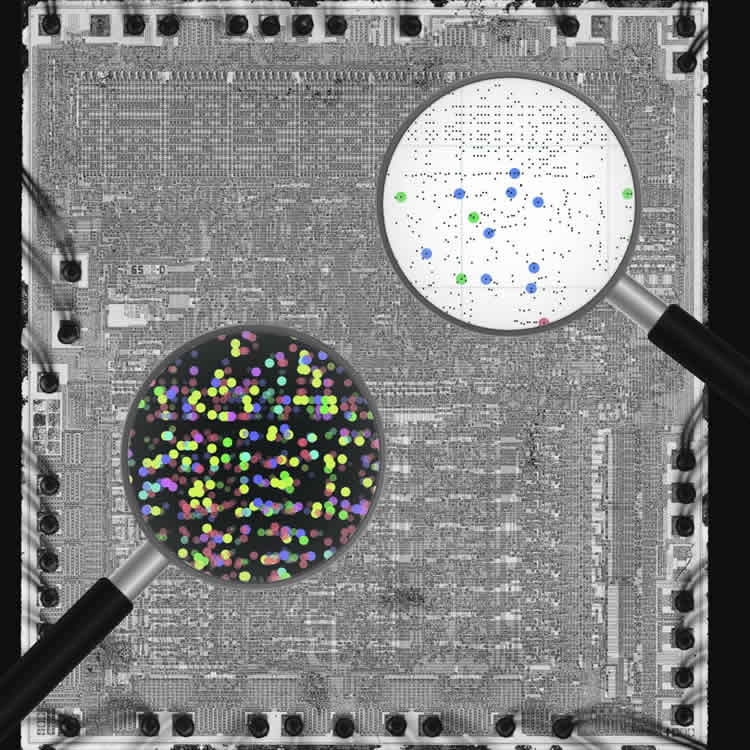Summary: Researchers apply a number of classical neuroscience analysis techniques to computer systems.
Source: PLOS.
Researchers use Donkey Kong to help guide new approaches in neuroscience.
The complexity of neural networks makes them difficult to analyze, but manmade computing systems should be simpler to understand. In a study published in PLOS Computational Biology, researchers applied widely used neuroscience approaches to analyze the classic games console Atari 2600 – which runs the videogame “Donkey Kong” – and found that such approaches do not meaningfully describe how the console’s microprocessor really works.
The field of neuroscience is advancing rapidly. Scientists are able to record the simultaneous activity of more and more neurons in more and more organisms. However, testing the validity of data analysis algorithms is difficult since it is still unclear how even relatively simple neural systems like the brain of a fruit fly work.
In the new paper, Eric Jonas of U.C. Berkeley and Konrad Kording of Northwestern University/ Rehabilitation Institute of Chicago describe their attempt to sidestep this issue by applying a large number of classical neuroscience analysis techniques to a computing system that they do understand: the 6502 microprocessor from the Atari 2600.

“Since humans designed this processor from the transistor all the way up to the software, we know how it works at every level, and we have an intuition for what it means to ‘understand’ the system,” Jonas says. “Our goal was to highlight some of the deficiencies in ‘understanding’ that arise when applying contemporary analytic techniques to big-data datasets of computing systems.”
The researchers used standard neuroscience techniques to analyze the Atari 2600’s microprocessor. They tested how well these techniques could illuminate known characteristics, such as the connections between different parts of the chip and the effects of destroying individual transistors. However, the techniques did not achieve the same level of understanding that a typical electrical engineering student would have.
According to Jonas, the results suggest that, “without careful thought, current big-data approaches to neuroscience may not live up to their promise or succeed in advancing the field.” Adds Kording: “Progress requires better experiments, theories, and data analysis approaches.”
Microprocessors and biological systems are different in many ways, which could limit the findings. Jonas and Kording also did not try all the existing neuroscience methods for probing the chip.
Nonetheless, the study hints at potential problems with modern approaches to neuroscience and suggests new paths to explore in order to better understand the brain. “We could learn a lot about how to reverse-engineer biological systems by reverse-engineering synthetic systems,” Jonas says.
Funding: EJ is supported in part by NSF CISE Expeditions Award CCF-1139158, DOE Award SN10040 DE-SC0012463, and DARPA XData Award FA8750-12-2-0331, and gifts from Amazon Web Services, Google, IBM, SAP, The Thomas and Stacey Siebel Foundation, Adatao, Adobe, Apple, Inc., Blue Goji, Bosch, Cisco, Cray, Cloudera, EMC2, Ericsson, Facebook, Fujitsu, Guavus, HP, Huawei, Informatica, Intel, Microsoft, NetApp, Pivotal, Samsung, Schlumberger, Splunk, Virdata, and VMware. KPK is supported by the National Institutes of Health (MH103910, NS074044, EY021579). The funders had no role in study design, data collection and analysis, decision to publish, or preparation of the manuscript.
Competing Interests: The authors have declared that no competing interests exist.
Source: Eric Jonas – PLOS
Image Source: NeuroscienceNews.com image is credited to Eric Jonas.
Original Research: Full open access research for “Could a Neuroscientist Understand a Microprocessor?” by Eric Jonas and Konrad Paul Kording in PLOS Computational Biology. Published online January 12 2017 doi:10.1371/journal.pcbi.1005268
[cbtabs][cbtab title=”MLA”]PLOS “Classic Video Game System Used to Improve Understanding of Brain.” NeuroscienceNews. NeuroscienceNews, 12 January 2017.
<https://neurosciencenews.com/atari-computational-neuroscience-5932/>.[/cbtab][cbtab title=”APA”]PLOS (2017, January 12). Classic Video Game System Used to Improve Understanding of Brain. NeuroscienceNew. Retrieved January 12, 2017 from https://neurosciencenews.com/atari-computational-neuroscience-5932/[/cbtab][cbtab title=”Chicago”]PLOS “Classic Video Game System Used to Improve Understanding of Brain.” https://neurosciencenews.com/atari-computational-neuroscience-5932/ (accessed January 12, 2017).[/cbtab][/cbtabs]
Abstract
Could a Neuroscientist Understand a Microprocessor?
There is a popular belief in neuroscience that we are primarily data limited, and that producing large, multimodal, and complex datasets will, with the help of advanced data analysis algorithms, lead to fundamental insights into the way the brain processes information. These datasets do not yet exist, and if they did we would have no way of evaluating whether or not the algorithmically-generated insights were sufficient or even correct. To address this, here we take a classical microprocessor as a model organism, and use our ability to perform arbitrary experiments on it to see if popular data analysis methods from neuroscience can elucidate the way it processes information. Microprocessors are among those artificial information processing systems that are both complex and that we understand at all levels, from the overall logical flow, via logical gates, to the dynamics of transistors. We show that the approaches reveal interesting structure in the data but do not meaningfully describe the hierarchy of information processing in the microprocessor. This suggests current analytic approaches in neuroscience may fall short of producing meaningful understanding of neural systems, regardless of the amount of data. Additionally, we argue for scientists using complex non-linear dynamical systems with known ground truth, such as the microprocessor as a validation platform for time-series and structure discovery methods.
“Could a Neuroscientist Understand a Microprocessor?” by Eric Jonas and Konrad Paul Kording in PLOS Computational Biology. Published online January 12 2017 doi:10.1371/journal.pcbi.1005268






